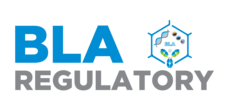FDA’s New Guidance on Protocol Deviations for Clinical Investigations
The U.S. Food and Drug Administration (FDA) released a pivotal guidance document titled “Protocol Deviations for Clinical Investigations of Drugs, Biological Products, and Devices: Guidance for Industry in December 2024“ (3). This guidance provides critical insights for sponsors, clinical investigators, and institutional review boards (IRBs) on handling unexpected changes in study procedures. Here’s the gist:
What?
- It helps define, identify, and report protocol deviations consistently.
- Stresses the need for consistent classification, reporting, and documentation.
When?
- Protocol deviations are usually unintentional and found after they happen.
- Intentional deviations should be rare and need prior approval from sponsors and IRBs.
How?
A. Protocol Deviations
- Important Deviations: Big issues that affect data quality or participant safety, like missing safety tests or giving the wrong treatment.
- Minor Deviations: Smaller issues that don’t have a major impact, like slight delays in scheduled visits.
B. Roles and Responsibilities
- Investigators: Protect participants and report all deviations to sponsors and IRBs.
- Sponsors: Monitor studies, ensure protocols are followed, and report major issues to the FDA. They should also train investigators.
- IRBs: Review and approve deviations to ensure safety and study integrity.
C. Protocol Amendments and Changes
- Changes to protocols need IRB and sometimes FDA approval. Urgent changes to eliminate immediate hazards can be made without prior approval but must be reported as deviations.
The guidance also provides recommendations on how to prevent or minimize deviations when they occur. The goal is to ensure reliable study results while keeping participants safe.
If you have questions about how this guidance affects your study protocols or require assistance with FDA regulatory compliance, BLA Regulatory is here to help. Our team of experts can provide tailored solutions to ensure your clinical investigations meet regulatory standards. For the latest updates on regulatory news and industry best practices, subscribe to our newsletter and follow us on [Social Media Platform].

